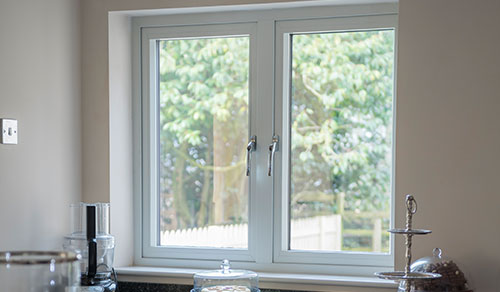The Ultimate Guide to Sofa Cleaning: Tips and Techniques for a Spotless Couch
10 Rising Cuadros Para Tu Mejor Amiga Trends To look at In 2025
29 mayo, 2025Aceite de Coco con CBD
29 mayo, 2025The Ultimate Guide to Sofa Cleaning: Tips and Techniques for a Spotless Couch
Sofas are a central piece of furniture in many homes, providing comfort and style while serving as a gathering place for family and friends. However, over time, sofas can accumulate dirt, stains, and odors, making them look worn and uninviting. Regular cleaning is essential to maintain the appearance and longevity of your sofa. This article will guide you through effective sofa cleaning techniques, tips, and best practices to keep your couch looking its best.

Understanding Your Sofa Material
Before diving into the cleaning process, it’s crucial to identify the material of your sofa. Different fabrics require different cleaning methods. Here are some common sofa materials and their cleaning requirements:

- Fabric Upholstery: This includes cotton, polyester, and blends. Most fabric sofas can be cleaned with a vacuum and a mild detergent solution. Always check the care label for specific instructions.
- Leather: Leather sofas require special care. Use a damp cloth to wipe down the surface and a leather conditioner to keep the material supple. Avoid using harsh chemicals that can damage the leather.
- Microfiber: Microfiber is a popular choice for sofas due to its durability and stain resistance. Use a mixture of water and vinegar or a specialized microfiber cleaner to remove stains.
- Velvet: Velvet requires gentle cleaning to avoid damaging the fibers. Use a soft brush or a vacuum with a brush attachment to remove dust, and spot clean with a damp cloth.
Essential Cleaning Supplies
To effectively clean your sofa, gather the following supplies:
- Vacuum cleaner with upholstery attachment
- Soft brush or lint roller
- Mild detergent or upholstery cleaner
- White vinegar
- Baking soda
- Soft cloths or sponges
- Leather conditioner (for leather sofas)
- Spray bottle
Step-by-Step Sofa Cleaning Process
Step 1: Remove Loose Dirt and Debris
Begin by removing any loose dirt, dust, and debris from your sofa. Use a vacuum cleaner with an upholstery attachment to thoroughly vacuum the entire surface, including cushions and crevices. For stubborn debris, a soft brush or lint roller can be helpful.
Step 2: Check for Stains
Inspect your sofa for any stains or spots. The sooner you treat a stain, the easier it will be to remove. For fabric sofas, you can create a cleaning solution by mixing a few drops of mild detergent with warm water. For tougher stains, consider using a specialized upholstery cleaner.
Step 3: Spot Clean Stains
Using a soft cloth or sponge, gently dab the stained area with the cleaning solution. Avoid rubbing, as this can spread the stain. For grease stains, sprinkle baking soda on the area and let it sit for 15 minutes before vacuuming it up. If you’re cleaning a leather sofa, use a damp cloth and a leather cleaner to spot clean.
Step 4: Deodorize Your Sofa
Over time, sofas can develop odors from spills, pets, or general use. To deodorize your sofa, sprinkle baking soda over the entire surface and let it sit for at least 15 minutes. Baking soda is a natural deodorizer that will absorb unwanted smells. Afterward, vacuum the baking soda off to reveal a fresher sofa.
Step 5: Clean the Cushions
If your sofa has removable cushions, take them off and clean them separately. Follow the same vacuuming and spot cleaning process for each cushion. If the cushions have removable covers, check the care label for washing instructions. Most fabric covers can be machine washed on a gentle cycle.
Step 6: Clean the Frame and Legs
Don’t forget to clean the frame and Ideal Glass legs of your sofa. Use a damp cloth to wipe down wooden or metal parts, ensuring you remove any dust or grime. For wooden frames, consider applying a wood polish to enhance shine and protect the finish.
Step 7: Steam Cleaning (Optional)
If your sofa is particularly dirty or stained, consider using a steam cleaner. Steam cleaning can effectively remove dirt and allergens without the use of harsh chemicals. Be sure to follow the manufacturer’s instructions and test a small area first to ensure it won’t damage the fabric.
Tips for Maintaining a Clean Sofa
- Regular Vacuuming: Make vacuuming your sofa a part of your regular cleaning routine. Aim to vacuum at least once a week to prevent dirt buildup.
- Use Throws and Covers: Protect your sofa from spills and stains by using throws or slipcovers. These can be easily washed and can extend the life of your sofa.
- Address Spills Immediately: If you spill something on your sofa, act quickly. Blot the area with a clean cloth to absorb the liquid, and follow up with the appropriate cleaning method for the fabric.
- Rotate Cushions: To prevent uneven wear, rotate your cushions regularly. This will help maintain their shape and appearance over time.
- Keep Pets Off: If possible, train pets to stay off the sofa or use pet-friendly covers to protect your furniture.
When to Seek Professional Cleaning
While regular maintenance can keep your sofa looking good, there are times when professional cleaning is necessary. Consider hiring a professional cleaner if:
- Your sofa has deep-set stains that you can’t remove
- The fabric is delicate and requires special care
- You want a thorough cleaning that includes steam cleaning or sanitizing
Conclusion
Cleaning your sofa doesn’t have to be a daunting task. By understanding the material, using the right cleaning techniques, and maintaining a regular cleaning schedule, you can keep your sofa looking fresh and inviting for years to come. Remember to address spills promptly and consider professional cleaning when necessary. With these tips, your sofa will remain a comfortable and stylish centerpiece in your home.
